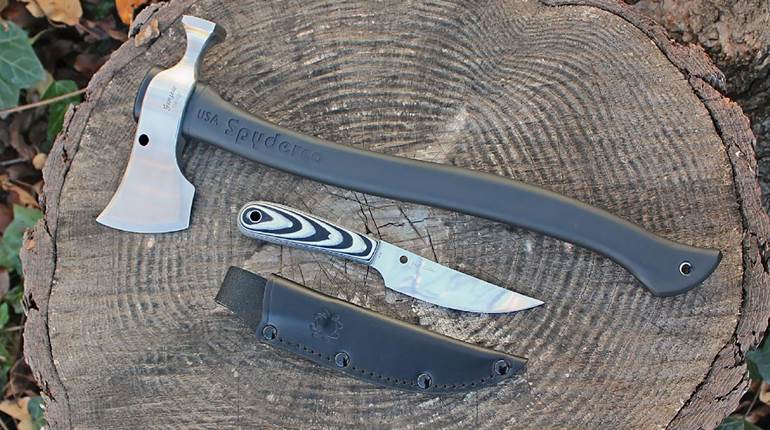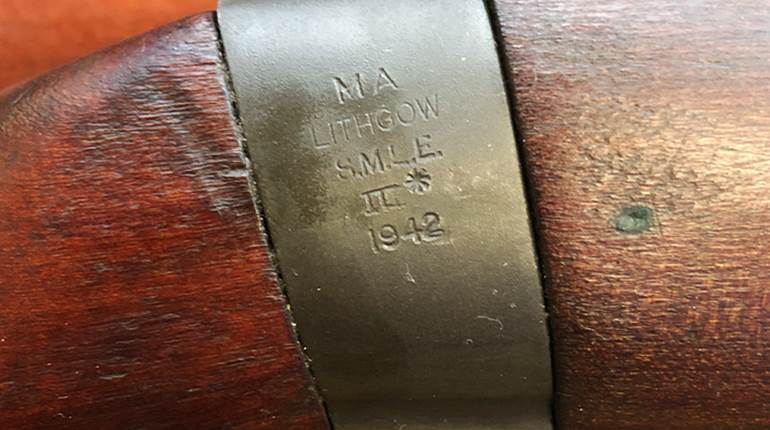

Fifty-four years later, Americans found themselves embroiled in a European war that made the casualties of the War Between the States pale in comparison. In 1916, the United States had a standing army of only 150,000 men, including National Guard troops. Twenty-three million men would register for the Selective Service in 1917, and 4 million were drafted into the military. Of that 4 million, 2.8 million Americans served overseas during the United States' nearly two-year involvement.

Arming, uniforming and equipping 4 million men in a short space of time was a Herculean task. As Secretary of Defense Donald Rumsfeld would famously state in 2003, “You go to war with the army you have, not the army you might want or wish to have at a later time.” Our Doughboys of the American Expeditionary Force (AEF) showed up in France in dire need of both training and equipment. The British and French initially supplied gas masks, rifles, tanks and machine guns, while the Americans back home placed their immense industrial powers into overtime to produce the much-needed supplies.

One item that the Doughboys didn’t show up in France with, but desperately desired, was a personal fighting knife. Traditionally, knifes made for impressive and menacing photographs during the Civil War era, but they accounted for a scant number of casualties. In the trench warfare of the Western Front, nightly raids and close-quarters, hand-to-hand combat necessitated the use of a durable and lethal knife. While bayonets, bolos and machetes were in the inventory, none of them were practical for trench warfare. Drawing on the experiences of hardened veterans of the British and French forces, Americans soon adopted a series of fighting knifes that not only served them well in France but long into the foxholes of the European and Asian Theaters of World War II.

Two British knife makers, Charles Clements and John Watts, developed and manufactured knuckle knives for the men of the British Expeditionary Force (BEF). These knives featured Bowie-style blades with a set of brass knuckles for the hilt. American Army Maj. James. McNary of the Ordnance Department's Army Services and Supply designed a knife with a blade similar to the French Model 1916 knife, but it incorporated the British-style brass knuckle hilt for use by the AEF in 1918, for which he was issued a British patent in October 1918.

Major McNary’s knife design was locally procured and manufactured by the French firm of Au Lion and issued to the troops with a 6 3/4" polished bright steel blade and a metal scabbard that had two wire hooks that would easily fasten to the U.S. Model 1910 Mills cartridge belt. These French-made knives are marked on the hilt with “US 1918” and “Au Lion” with an image of a lion on the blade.

An American-made version of the same knife with a blackened blade was made by Landers, Frary & Clark of New Britain, Conn., although the two retaining wires on the LF&C knife are considered thinner and frequently broke. The LF&C knifes are marked “US 1918 LF&C” on the hilt and have prominent spikes at the curve of each of the finger holes that are not as pronounced on the Au Lion model. The LF&C 1918 knife was given the designation of “Fighting Knife Mk I.”

In 1917, Henry Disston & Sons of Philadelphia designed a walnut-grip fighting knife with a blued 9" triangular spike blade and a steel bowed handguard with six pyramid-style spikes protruding along the outer edge. (A rare Type II version has seven pyramids.) The scabbard is leather with metal furniture and marked “Jewel 1918” on the leather portion of the scabbard. This was also manufactured by The Oneida Community Ltd. of New York and Landers, Frary & Clark. The knife is marked “US H.D&S 1918” or “US LF&C 1918” or “US O.C. L 1918” on the tang of the knuckle bow.

The American Cutlery Co. of Chicago also produced a walnut-gripped blued 9” triangular bladed fighting knife similar to the Disston & Sons knife, but it had five sets of “dragon’s teeth”-style spikes along the handguard. It employed the same scabbard that the LF&C knife used, making them interchangeable with each other. The inside of the handguard is marked “A.C.CO USA 1917.”

Some authors have written that the brass-hilted MK I fighting knife made by LF&C never made its way to France before the Great War ended in November of 1918. They theorize that the knives stayed in military stores until the beginning of the World War II and were favorites of the U.S. Airborne forces. Numerous examples used by World War II veterans were modified by shaving the brass hand guard skirt to be flush with the knife so as not to pinch into the torsos of the soldiers.
Today’s collectors have their work cut out for them acquiring the many manufacturers of these four distinct knives that served our fighting men so well more than 100 years ago. Author Homer M. Brett, who helped design the current M9 bayonet, wrote in his indispensable volume, "The Military Knife & Bayonet" (2001, World Photo Press) that Japanese-made copies of the MK I 1918 fighting knife were sold to American servicemen passing through Japan on their way to Vietnam in the 1960s and used during that conflict as well.
For further reading the author recommends:
Brett, Homer M. - The Military Knife & Bayonet (2001, World Photo Press)
Werner, Brett - Uniforms, Equipment and Weapons of the AEF in World War I (2006, Schiffer Military History)
Cole, M. H. - U.S. Military Knives, Bayonets & Machetes Book III (1979)
Stephens, Frederick J. - Fighting Knives (1980, Arms & Armour Press)






































